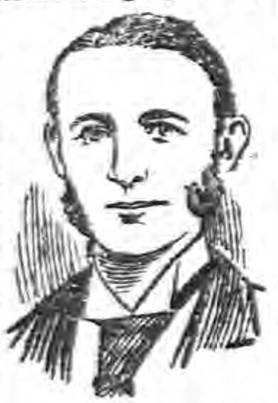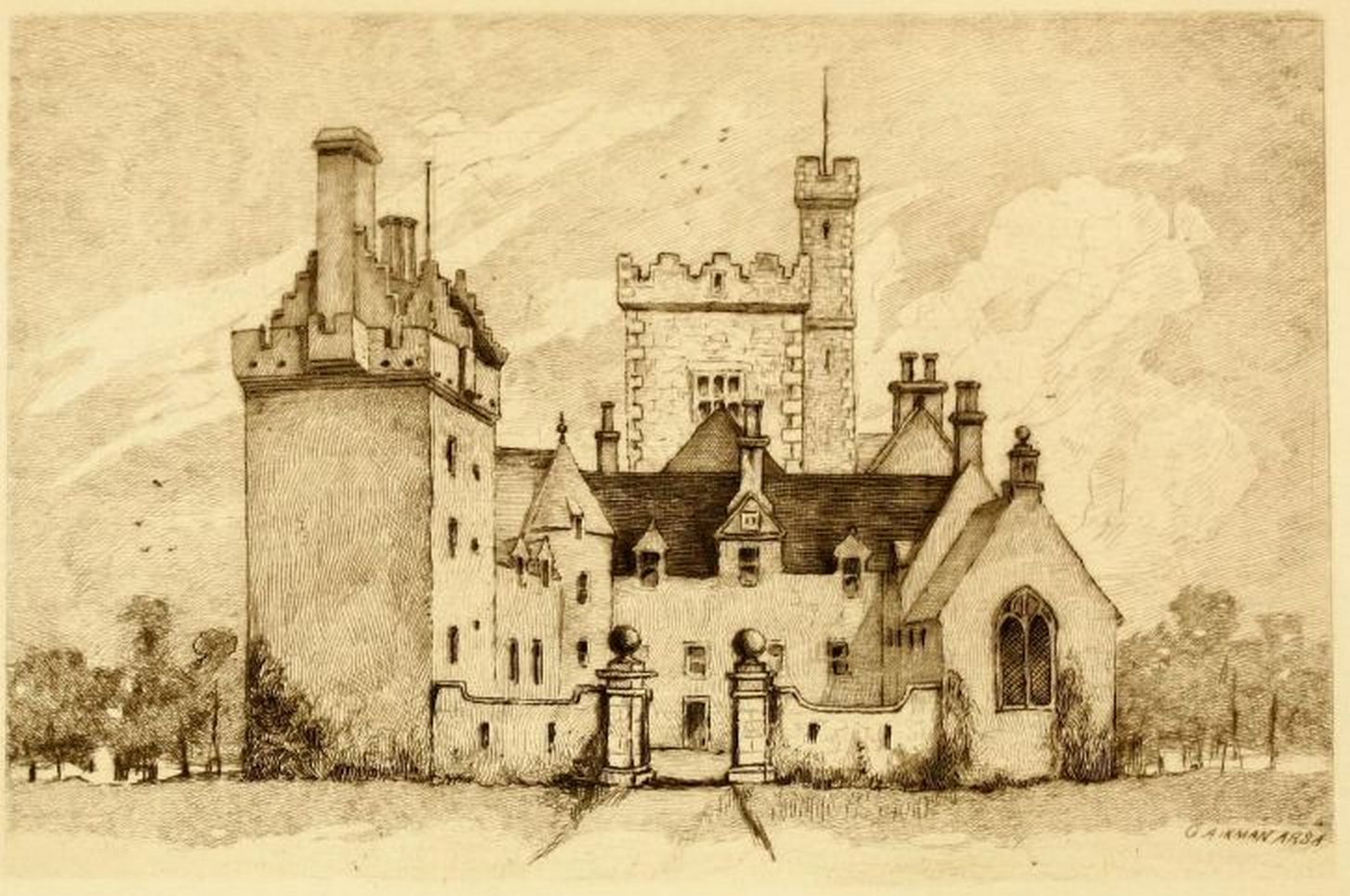
Dundee Courier 29 June 1892
Sir Andrew Noel Agnew, 9th Baronet of Lochnaw (14 August 1850 – 14 July 1928) was a descendent of an old Scottish family whose main seat was Lochnaw Castle in Wigtownshire, Scotland.
Educated at Harrow then Trinity College, Cambridge, he qualified as a barrister in 1874. Agnew decided to alter his career path after succeeding his father in 1892, opting instead to concentrate on politics. He had joined the Liberal Unionist party in 1885 and tried to secure a place as a Member of Parliament for Dumfries. Initially unsuccessful, he was elected Member of Parliament for Edinburgh South in 1900.
In 1889 he married the socialite, Gertrude VernonBiography of socialite Gertrude Vernon, Lady Agnew of Lochnaw, who gained prestige and notoriety from her portrait by artist John Singer Sargent.Biography of socialite Gertrude Vernon, Lady Agnew of Lochnaw, who gained prestige and notoriety from her portrait by artist John Singer Sargent., and commissioned John Singer Sargent to paint her portraitOil on canvas portrait of Lady Agnew by John Singer Sargent completed during 1892. Commissioned by her husband Sir Andrew Noel Agnew, 9th Baronet. in 1892.
Agnew died in 1928; the baronetcy passed to his nephew, who never adopted the title.
Family
Agnew was born on 14 August 1850 at Exton Park in Rutland, the eldest child of Sir Andrew Agnew, 8th Baronet of Lochnaw and his wife Lady Mary Arabella Louisa, daughter of the first Earl of Gainsborough.[1] He had three brothers and six sisters.[2] On 15 October 1889, he married Gertrude VernonBiography of socialite Gertrude Vernon, Lady Agnew of Lochnaw, who gained prestige and notoriety from her portrait by artist John Singer Sargent.Biography of socialite Gertrude Vernon, Lady Agnew of Lochnaw, who gained prestige and notoriety from her portrait by artist John Singer Sargent., daughter of Hon. Gowran Charles Vernon and Caroline Fazakerley; the couple had no children.[1][3]
Education and career
After attending Harrow School from 1864, Agnew went to Trinity College, Cambridge. Appointed as a Deputy Lieutenant for Wigtownshire in 1872, he also served as a Justice of the Peace.[4] He was called to the bar after gaining his law degree in 1874.[3] Following the death of his father on 25 March 1892 at Lochnaw Castle when Agnew inherited the estate,[1] he turned to a career in politics and ceased practising as a barrister,[5] although a report in The Scotsman intimates that he never performed as such.[6] He became a member of the Liberal Unionist party in 1885.[6] He first sought election as a member of Parliament for Dumfries[4] in 1892 but did not gain a seat until 1900 when he successfully stood for the Edinburgh South constituency,[7] a position he retained until 1906.[3] His speeches in the Commons were rare, covering mundane topics with his enthusiasm for politics decreasing.[8]
Agnew was commissioned a 2nd lieutenant in the 1st Ayrshire and Galloway Artillery Volunteers on 28 February 1900,[9] rising to the rank of captain before he retired.[3] He was appointed as a member of the Royal Company of Archers in 1903.[2][a]The Archers act as bodyguards to the monarch when they are in residence at Holyrood Palace.[2] Agnew was particularly proud of the appointment and commissioned a portrait of himself dressed in the Royal Archer attire. Artist Ronald Gray (1868–1951) recorded in his unpublished memoirs that he visited Sir Andrew and Lady Agnew at Lochnaw Castle in the summer of 1911 completing the oil on canvas head study of Agnew in two sittings.[10][b]The painting is held in a private collection but had originally been hung in the billiard room at Lochnaw Castle.[10]
Other interests
Described in a report in The Scotsman as being of a “retiring, almost shy nature”,[6] Agnew had an interest in art and enjoyed sketching.[11] A diligent record-keeper, he also had an avid passion for forestry organising extensive tree planting on his estates.[12] He was president of the Royal Scottish Arboricultural Society, writing An introduction to Forestry aimed at schoolchildren and A Guide to Wigtownshire.[3][6]
A keen sportsman, he enjoyed country pursuits like fishing and game shooting.[13] The baronet spent a lot of time at Lochnaw Castle, the primary residence of the family for around six-hundred years.[14] He had arranged for heating to be installed in the castle in 1900, the same year he enlarged the Eagle room, following the installation of a hot water system in 1893.[13]
In 1892 Agnew commissioned John Singer Sargent to paint a portrait of Lady AgnewOil on canvas portrait of Lady Agnew by John Singer Sargent completed during 1892. Commissioned by her husband Sir Andrew Noel Agnew, 9th Baronet..[15] The painting’s exhibition the following year launched the artist’s British career on an upward trajectory.[16] The success of the portrait also added to Lady Agnew’s notability and prestige.[17]
Death and legacy
Agnew died in his London residence, 23 Grosvenor Street, on 14 July 1928. His funeral took place on 18 July; he is buried in the Old Parish Churchyard at Leswalt alongside his other antecedents.[18]
As Agnew had no children, the baronetcy would have been inherited by his younger brother, Charles Hamlyn Agnew, born in 1859, but he had died in a London nursing home on 31 March 1928.[6][19] The title then passed to his son, the ninth baronet’s nephew, Fulque Gerard Melville Noel (October 1900 – 28 August 1975), who never used it.[20]
The estate of Lochnaw and the Castle inherited by the ninth baronet had extended to 14,000 acres but he had sold extensive lands following the First World War.[c]The estate was further decimated after the Second World War when the rest of it was sold at auction.[8] The years of the great depression had adversely affected the income generated from the estate, as did the significant costs of the high society lifestyle maintained in London by the ninth baronet and Lady Agnew during the years of their marriage.[21]
Notes
| a | The Archers act as bodyguards to the monarch when they are in residence at Holyrood Palace.[2] |
|---|---|
| b | The painting is held in a private collection but had originally been hung in the billiard room at Lochnaw Castle.[10] |
| c | The estate was further decimated after the Second World War when the rest of it was sold at auction.[8] |

